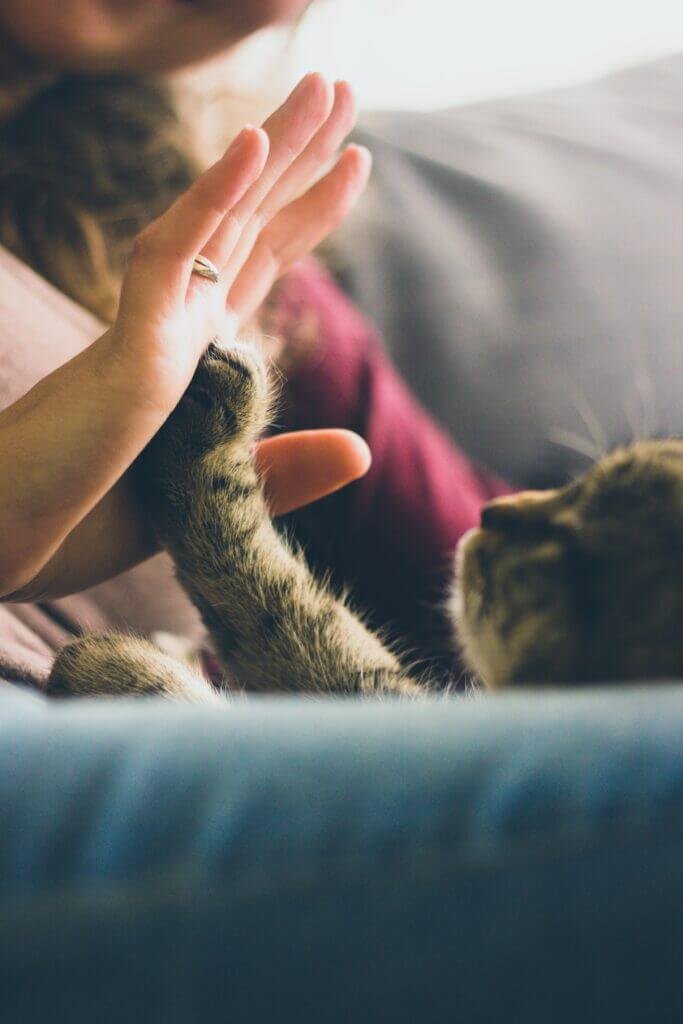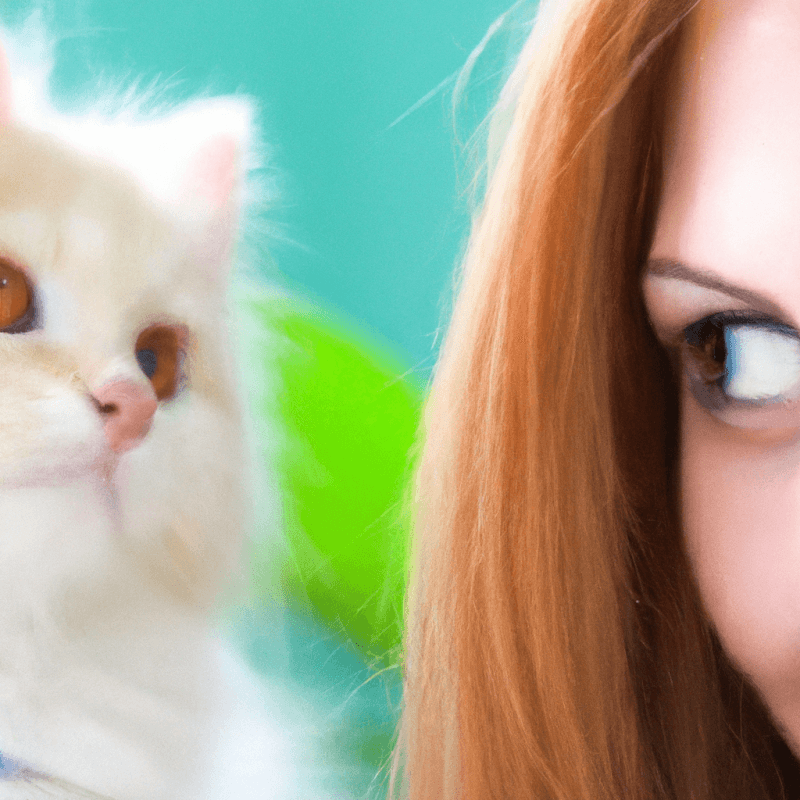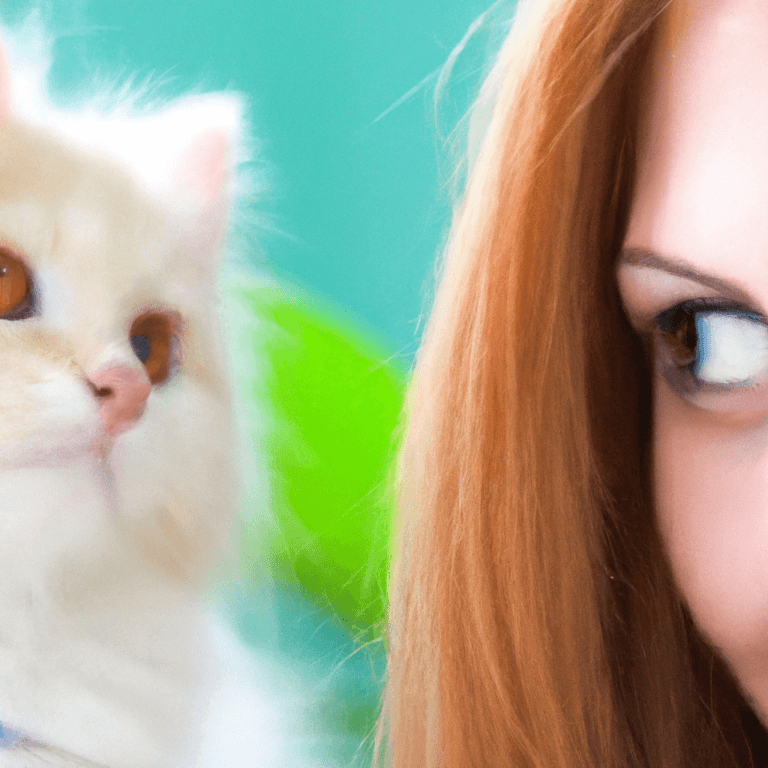Is your furry companion acting a bit off lately? It’s natural for us to worry about our pets, especially when we notice changes in their behavior. But how can you tell if your pet is feeling stressed? In this article, we will explore some common signs that may indicate your pet is experiencing stress. By being aware of these signs, you can take proactive steps to help your pet feel more relaxed and comfortable. So, let’s delve into the world of pet stress and discover the clues that our beloved animals give us when they are feeling overwhelmed.
Physical Signs of Stress in Pets
Changes in Appetite and Weight
One of the physical signs that your pet may be experiencing stress is a change in their appetite and weight. Some pets may lose their appetite and experience weight loss, while others may become voracious eaters and gain weight. These changes can be a result of stress hormones affecting their metabolism and digestion. It’s important to monitor your pet’s eating habits and consult with a veterinarian if you notice any significant changes.
Ready for Cat Trivia?
Test your knowledge about cats!

Digestive Issues
Stress can have a noticeable impact on your pet’s digestive system. Common symptoms include diarrhea, constipation, vomiting, or even excessive gas. You may also notice that your pet’s stool is not consistent in texture or color. If your pet is experiencing digestive issues, it’s crucial to consult with a veterinarian to rule out any underlying health conditions and address the stressors that may be contributing to these symptoms.
Excessive Shedding or Hair Loss
Experiencing stress can lead to excessive shedding or hair loss in pets. This can manifest as small patches of hair missing or an overall increase in shedding. Stress hormones can disrupt the normal hair growth cycle, leading to hair loss. Regular grooming and a healthy diet can help minimize excessive shedding, but addressing the underlying stress is crucial to resolving the issue.
Lethargy or Hyperactivity
When pets are stressed, they may exhibit changes in their activity levels. Some pets may become lethargic and appear disinterested in their surroundings, while others may exhibit restlessness and hyperactivity. These changes in behavior are often indicative of the physical toll that stress can take on their bodies. Regular exercise and providing mental stimulation can help alleviate stress and restore a balanced energy level in your pet.
Increased Urination or Accidents
If your pet is suddenly urinating more frequently or having accidents inside the house despite being previously potty-trained, it could be a sign of stress. Stress can cause an increase in urine production, leading to more frequent bathroom breaks. Additionally, pets may also have accidents when they are anxious or feeling threatened. Consulting with a veterinarian can help identify the underlying cause of these changes and implement strategies to manage stress.
Restlessness or Agitation
Restlessness and agitation are common physical signs of stress in pets. Your pet may constantly pace, have difficulty settling down, or exhibit signs of agitation such as excessive panting, trembling, or shivering. These behaviors are often their way of expressing their discomfort and unease. Creating a calm and secure environment for your pet, along with regular exercise and mental stimulation, can help reduce restlessness and promote relaxation.
Behavioral Signs of Stress in Pets
Excessive Barking, Meowing, or Vocalization
Pets may resort to excessive vocalization when they are stressed or anxious. Dogs may bark excessively, while cats may meow more frequently or even yowl. These vocalizations are their way of trying to communicate their distress. If your pet is displaying excessive vocalization, it’s important to determine the underlying stressors and provide them with appropriate mental and physical stimulation to alleviate their anxiety.
Withdrawal or Hiding
One common behavioral sign of stress in pets is withdrawal or hiding. Your pet may isolate themselves in a specific area of the house, under furniture, or in a closet. This behavior is their attempt to create a safe space away from the stressors in their environment. It’s crucial to provide them with a quiet and secure area where they can retreat to and feel protected.
Increased Aggression or Destructive Behavior
Stress can cause pets to exhibit increased aggression towards humans, other animals, or even objects. They may become more easily provoked, growl, snarl, or even bite. Additionally, pets may engage in destructive behavior such as chewing on furniture, shoes, or other items in the house. These behaviors are their way of releasing pent-up anxiety and frustration. Implementing behavior modification techniques, providing mental stimulation, and seeking professional help can all contribute to managing and reducing these behaviors.
Pacing or Excessive Licking
If you notice your pet pacing back and forth or excessively licking themselves, it may be a sign of stress. Pacing and repetitive behaviors can be a way for pets to cope with their anxiety or restlessness. Excessive licking can also lead to skin irritation or hot spots. Identifying the triggers for these behaviors and providing your pet with alternative outlets for their energy and anxiety can help alleviate their stress.
Changes in Sleep Patterns
Stress can disrupt your pet’s normal sleep patterns. They may have difficulty falling asleep, wake up frequently during the night, or experience restless sleep. Just like humans, pets need quality sleep to maintain their overall well-being. Providing a calm and comfortable sleeping environment and establishing a consistent bedtime routine can help regulate their sleep patterns and reduce stress.
Loss of Interest in Play or Social Interaction
When pets are stressed, they may lose interest in activities they once enjoyed. They may become less playful or avoid social interaction with humans or other animals. This loss of interest and withdrawal can be a sign of emotional distress. It’s essential to create a positive and engaging environment for your pet, with plenty of opportunities for play and socialization, to help them overcome their stress and regain their enthusiasm.

Emotional Signs of Stress in Pets
Excessive Panting or Drooling
Excessive panting or drooling is an emotional sign that your pet may be experiencing stress. Dogs, in particular, may pant excessively when they are anxious or afraid. It’s important to monitor their panting and drooling patterns, especially in situations where stressors are present, such as during thunderstorms or visits to the veterinarian. Providing a calm and safe environment can help reduce their emotional stress.
Trembling or Shivering
Trembling or shivering is a common emotional response to stress in pets. This can occur during specific events or situations that trigger fear or anxiety. It’s essential to identify the triggers for these behaviors and work towards desensitization or counterconditioning with the help of a professional if necessary. Comforting your pet through gentle touch and soothing words can also help alleviate their emotional stress.
Excessive Grooming
Pets may resort to excessive grooming as a way to self-soothe when they are stressed. Cats, in particular, are known for their meticulous grooming habits, but excessive grooming can lead to skin irritation or even hair loss. Encouraging alternative outlets for relaxation such as interactive toys or engaging in playtime can help redirect their focus away from excessive grooming and reduce their stress.
Fearful or Anxious Behavior
Fear and anxiety are strong emotional responses to stress in pets. They may display fearful behaviors such as cowering, trembling, or hiding when they encounter stressors. An anxious pet may exhibit pacing, panting, or even excessive vocalization. Creating a safe and secure environment while gradually exposing your pet to their fears through positive reinforcement can help them overcome their anxieties and build resilience.
Depression or Despondency
Pets can experience feelings of depression or despondency when they are under significant stress. They may exhibit changes in their overall mood, become withdrawn, or show a lack of interest in their usual activities. Building a routine, providing mental and physical stimulation, and offering companionship can all help lift their spirits and alleviate their emotional stress.
Separation Anxiety
Separation anxiety is a common emotional response to stress in pets, particularly dogs. They may become extremely distressed when left alone, leading to excessive barking, destructive behavior, or even self-harm. Addressing separation anxiety requires a structured and gradual approach, including training techniques and establishing a sense of security and routine when you are away. Seeking professional help from a veterinary behaviorist may also be beneficial in severe cases.
Signs of Stress in Dogs
Ears Pinned Back
One physical sign of stress in dogs is when their ears are pinned back against their head. This can indicate fear or anxiety. Pay attention to your dog’s body language, as their ears can provide valuable insight into their emotional state.
Whale Eye (Wide-eyed Stare with Whites Visible)
If you notice your dog giving you a wide-eyed stare with the whites of their eyes visible, it is commonly referred to as “whale eye.” This is a sign of stress or uneasiness. It’s important to observe their surroundings and identify any potential triggers or stressors.
Tail Tucked Between Legs
A dog tucking their tail between their legs is a classic sign of stress or fear. This is their way of protecting their vulnerable areas. If your dog consistently exhibits this behavior, it’s crucial to address the underlying stressors and provide them with a calm and secure environment.
Showing Teeth or Snarling
When a dog shows their teeth or snarls, it is a clear sign of aggression or fear. This behavior is their way of communicating that they feel threatened or uncomfortable. It’s important to respect their boundaries and provide them with positive experiences to build trust and reduce their stress levels.
Excessive Panting
Excessive panting, even when not physically exerted or exposed to warm temperatures, can be a sign of stress in dogs. They may pant rapidly, with exaggerated breaths, to release their anxiety. If excessive panting persists, it’s crucial to consult with a veterinarian to determine the underlying cause and develop a management plan.
Excessive Salivation
If you notice that your dog is drooling excessively, it may be a sign of stress or discomfort. Excessive salivation can occur when a dog is anxious or fearful. Observe their behavior and surroundings to identify potential triggers, and provide them with a secure and calming environment to help reduce their stress levels.

Signs of Stress in Cats
Excessive Licking or Grooming
Cats are known for their grooming habits, but excessive licking or grooming can be a sign of stress. If you notice your cat constantly licking themselves, to the point of causing skin irritation or hair loss, it may be an indication that they are experiencing emotional distress. Providing them with environmental enrichment and plenty of interactive toys can help redirect their focus and alleviate stress.
Hiding or Avoiding Interaction
Cats often retreat or hide when they are stressed or anxious. If you notice your cat spending a significant amount of time hiding under furniture, in closets, or other secluded areas, it may be a sign that they are avoiding stressors in their environment. Creating safe spaces for them to retreat to and providing gentle reassurance can help alleviate their stress and encourage positive interaction.
Loud Meowing or Yowling
Excessive and loud meowing or yowling can be a sign of stress in cats. They may vocalize more frequently when they feel threatened or anxious. Identifying the triggers for their vocalization and providing them with a secure environment can help reduce their stress levels and promote a calmer demeanor.
Increased Aggression or Biting
Stress can lead to increased aggression or biting behaviors in cats. They may become easily provoked, hiss, swat, or even bite when they feel threatened or uncomfortable. Addressing the underlying stressors, providing mental and physical stimulation, and seeking professional help can all contribute to managing and reducing these behaviors.
Urinating Outside the Litter Box
If your cat starts urinating outside the litter box, it could be a sign of stress. Stress can cause cats to develop behavioral issues, including inappropriate elimination. It’s important to consult with a veterinarian to rule out any underlying health conditions and address the stressors that may be contributing to this behavior.
Excessive Scratching
Excessive scratching is a common sign of stress in cats. They may spend more time scratching themselves, furniture, or other objects in their environment as a way to cope with their anxiety. Regular nail trims, the use of scratching posts, and providing interactive playtime can help redirect their scratching behavior and reduce their stress levels.
Environmental Triggers of Pet Stress
Changes in Routine or Environment
Changes in routine or environment can be significant triggers of stress for pets. Moving to a new home, introducing new family members or pets, or even rearranging furniture can disrupt their sense of familiarity and security. Gradually introducing changes, providing a predictable routine, and allowing pets time to adjust can help minimize their stress levels.
Loud Noises or Thunderstorms
Pets can be highly sensitive to loud noises such as thunderstorms, fireworks, or even construction noises. These sudden and unexpected sounds can startle and stress pets. Providing a safe and comfortable space for them during these events, such as a quiet room with soothing background noise, can help reduce their anxiety.
Introducing a New Baby or Pet to the Household
The introduction of a new baby or pet to the household can be a significant source of stress for existing pets. They may feel threatened or overwhelmed by the new arrival, which can lead to behavioral changes or emotional distress. Gradual introductions, supervised interactions, and providing sufficient attention and reassurance can help ease the transition and reduce stress.
Lack of Mental or Physical Stimulation
Boredom and lack of mental or physical stimulation can contribute to pet stress. Pets need mental and physical exercise to keep them engaged and prevent the buildup of anxiety. Providing interactive toys, puzzle feeders, regular exercise routines, and engaging in activities such as obedience training or agility can help alleviate stress and promote overall well-being.
Unpleasant Odors or Strong Chemicals
Strong odors or chemicals in the environment can be overwhelming and stressful for pets. Cleaning products, air fresheners, and even certain scents can trigger anxiety in sensitive individuals. It’s important to use pet-safe products and ensure proper ventilation to minimize exposure to potentially stress-inducing odors or chemicals.
Overcrowding or Lack of Personal Space
Overcrowding and lack of personal space can be detrimental to a pet’s well-being. Just like humans, pets need their own space to retreat to and feel safe. Overcrowding can lead to heightened stress levels and increased aggression. Providing each pet with their own designated area and ensuring they have ample space to move around and relax can help reduce their stress levels.

Health-Related Causes of Pet Stress
Chronic Pain or Illness
Pets experiencing chronic pain or illness may also experience higher stress levels. The discomfort and physical limitations associated with pain or illness can contribute to emotional distress. Regular veterinary check-ups, appropriate pain management, and ensuring a comfortable living environment can help minimize stress related to health conditions.
Uncomfortable Living Conditions
Uncomfortable living conditions, such as extreme temperatures, inadequate bedding, or insufficient shelter, can lead to stress in pets. They rely on us to provide them with a safe and comfortable living environment. Regularly checking and addressing any issues related to their living conditions can help alleviate stress and promote their well-being.
Inadequate Diet or Nutrition
A poor diet or inadequate nutrition can contribute to both physical and emotional stress in pets. Nutritional deficiencies or imbalances can affect their overall health and well-being, leading to increased susceptibility to stress. Providing a balanced and appropriate diet tailored to their specific needs, and consulting with a veterinarian for dietary recommendations, can help ensure optimal nutrition and reduce stress.
Allergies or Sensitivities
Allergies or sensitivities to certain foods, environmental factors, or substances can cause significant stress in pets. Symptoms may include itching, gastrointestinal distress, or respiratory issues. Identifying and addressing allergens or sensitivities through dietary changes, avoiding triggers, and providing appropriate medical interventions can help alleviate stress and improve their quality of life.
Side Effects of Medications
Some medications may have side effects that can contribute to stress in pets. These side effects can manifest as changes in behavior, appetite, or sleep patterns. It’s important to consult with a veterinarian about any potential side effects and discuss alternative treatment options if necessary.
Lack of Exercise or Overexertion
Pets need regular exercise to maintain their physical and mental well-being. While lack of exercise can lead to boredom and stress, overexertion can also have negative consequences. Striking a balance between sufficient exercise and rest is crucial. Providing appropriate exercise routines tailored to their breed, age, and health condition can help minimize stress related to physical activity.
Managing and Reducing Pet Stress
Creating a Calming Environment
Creating a calming environment is essential to managing and reducing pet stress. Designate a quiet and secure space where your pet can retreat to when they feel overwhelmed. Use calming pheromone diffusers or sprays, provide comfortable bedding, and minimize exposure to stress-inducing stimuli to create a safe and relaxing environment for your pet.
Maintaining a Consistent Routine
Pets thrive on routine and predictability. Maintaining a consistent daily routine for feeding, exercise, and playtime can help reduce stress. Consistency provides a sense of security and helps pets know what to expect, which can alleviate anxiety and promote a balanced emotional state.
Providing Mental and Physical Stimulation
Regular mental and physical stimulation is essential for managing pet stress. Engage your pet in playtime, interactive toys, and puzzle feeders to provide both mental and physical exercise. This helps redirect their focus away from stressors and promotes their overall well-being.
Implementing Behavior Modification Techniques
Behavior modification techniques can help address specific stress-related behaviors in pets. Positive reinforcement training, desensitization, and counterconditioning are effective methods to help pets overcome their fears and anxieties. Consult with a professional trainer or veterinary behaviorist for guidance on implementing behavior modification techniques specific to your pet’s needs.
Ensuring a Healthy and Balanced Diet
Providing a healthy and balanced diet is vital for managing pet stress. Ensure that your pet’s diet meets their nutritional requirements and consult with a veterinarian for specific dietary recommendations. Proper nutrition plays a significant role in their physical and emotional well-being.
Seeking Professional Help or Training
In severe cases of pet stress, seeking professional help or training may be necessary. Veterinarians, veterinary behaviorists, or certified trainers can provide guidance, develop individualized plans to manage stress, and address specific behavioral issues. Professional support can be invaluable in helping your pet overcome their stress and lead a happier and healthier life.

When to Seek Veterinary Assistance
Persistent or Severe Symptoms
If your pet’s stress symptoms persist or worsen over time, it’s crucial to seek veterinary assistance. Persistent or severe symptoms may indicate an underlying medical condition or more complex behavioral issue that requires professional intervention.
Changes in Bathroom Habits
Significant changes in your pet’s bathroom habits, such as increased frequency, accidents, or difficulty urinating or defecating, should not be ignored. These changes can indicate both physical and emotional distress and require prompt veterinary attention.
Sudden Weight Loss or Gain
Sudden weight loss or gain is a concerning sign and should be evaluated by a veterinarian. It can be indicative of underlying health issues or changes in appetite due to stress. Your veterinarian can investigate further and design an appropriate treatment plan.
Self-Harm or Excessive Licking
If your pet is engaging in self-harming behaviors such as excessive licking, scratching, or chewing, it’s essential to seek veterinary assistance. These behaviors can lead to secondary infections or injuries that require medical attention.
Refusal to Eat or Drink
A sudden refusal to eat or drink can be a sign of a more significant health issue or extreme stress. It’s crucial to consult with a veterinarian to determine the underlying cause and provide necessary treatment.
Escalation of Aggressive Behavior
If your pet’s aggression escalates or becomes unmanageable, it’s important to seek professional help. Aggressive behaviors can be dangerous and require specialized training and management techniques.
Conclusion
As pet owners, it is our responsibility to ensure the well-being and happiness of our furry companions. Recognizing and addressing the signs of stress in pets is crucial for their overall health and quality of life. By understanding physical, behavioral, and emotional signs of stress, as well as identifying environmental and health-related triggers, we can take proactive steps to manage and reduce stress in our pets. Creating a calming environment, providing mental and physical stimulation, maintaining a consistent routine, and seeking professional help when needed are all essential in helping our beloved pets lead stress-free and fulfilling lives.



